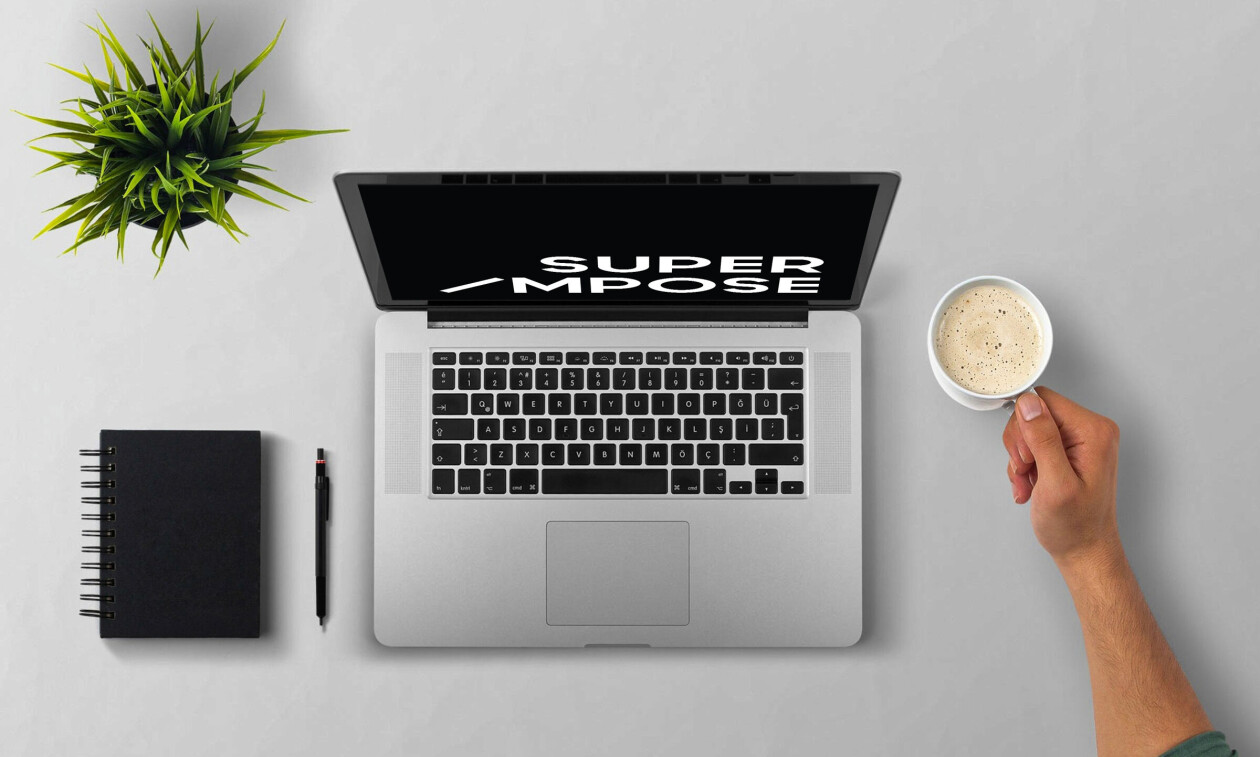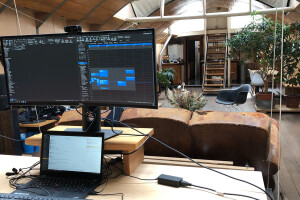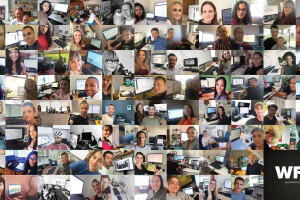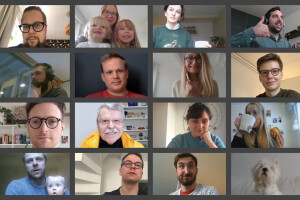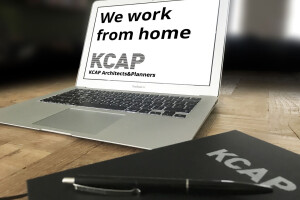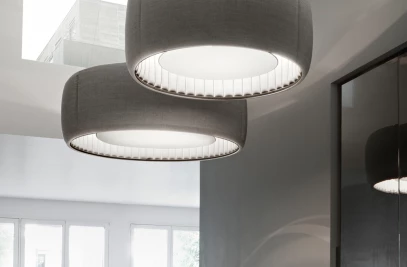As one of the measures to curb the spread of the coronavirus, many hit countries call on working people to work from home as much as possible. Architects are also responding to this call. Archello is asking various offices about how they are giving shape to this. Carolyn Leung, Ben de Lange and Ruben Bergambagt, the three co-founding partners of Superimpose, offer an insight into how their Beijing-based office managed during the crisis.
The crisis is slowly passing in China, how is the current situation for your office? Can everything start back to normal? Working from home can be a challenge, how did your office organize this?
“Superimpose Architecture has worked from home throughout February, after the Chinese New Year holiday. We have remote access to our server and communicated internally through videoconference meetings. Also for day-to-day project communication with our clients, contractors and suppliers, we have adapted online conference calls and video recording for presentations. So far, our experiences are mostly positive, however we did find it more challenging to have design sessions because at our office this is an act of active and participative discussion, sketching and brainstorming with the entire project team at one large table.
After careful consideration and with implementing serious measures, we resumed working at the office from the beginning of March. Our counter-virus measures include: social distancing, washing hands regularly, providing hand sanitizers, wearing face masks, and temperature checks when entering the office compound, provided by the compound security. Most of the businesses in Beijing are currently working at their offices again. Aside from the temperature checks at compound and shop entrances, restrictions on domestic travel and other counter-virus measures it almost feels like we are back to ‘normal’.”
What was it like being in the epicenter for 3-4 months?
“Luckily, Beijing was never part of the epicenter in China and had a limited amount of registered infections. We never experienced any hoarding or severe panic within Beijing’s population. However, we did feel rather anxious at the beginning of February because we didn’t know how far and rapidly the virus would spread, especially considering the large projected influx of people returning from across the country after their Chinese new-year holiday.
Towards the second week of February the anxious atmosphere was switching to a calm, organized, aware and creative vibe. We have noticed that the people in China are ‘on the same page’ and in solidarity to cope with the virus individually and as a community.
At this moment everybody was taking the virus seriously; people are taking their individual responsibility by wearing facemasks, staying at home as much as possible, avoiding crowded places and allowing for the large amount of temperature checks at each and every compound, shop or restaurant entrance. People expect other people to do the same. The virus enabled a sense of social (online) bonding because everyone is in the same situation.”
Could you work optimally this way? How is the contact between colleagues and other parties, such as clients? Did the crisis change anything for current and upcoming projects?
“For us it feels like China’s economy has been put ‘on hold’ for around two to three months. Our clients initially had to re-organize themselves and needed time to put internal online communication structures in place. This, together with new financial insecurities, caused decisions for new projects being delayed. Also, until this day, it has been nearly impossible to meet our existing or potential clients, which are based throughout China and Asia. Traveling out of Beijing at the moment means we need to self-quarantine for fourteen days both ways.
All of this invited Superimpose to being more creative on finding alternatives to approach our future clients. We’ve initiated online design-sharing sessions and inspirational talks for those clients working from home and with time on their hands. These strategies have worked for part of our clients, however in China, building up a strong relation with your client is crucial. Those clients too used to this still prefer to meet in person first and currently rather talk directly to parties they have been engaging with before.
Current projects:
Our current projects luckily have received very little delay and allowed us to keep working from home and later from the office again. In order to explain our current way of working with some our clients, here are some examples:
Video Recording for presentation:
We are currently in the schematic design stage of a co-working office interior design project in Hangzhou. The project communication has been running very smoothly, mostly due to a very flexible and ‘switched-on’ client. We have presented the concept design through a pre-recorded video with voice-over, followed by a live video conference call for comments and discussion.
Weekly online team meetings:
For another project, Superimpose is working on a 78,000 square meters transit-orientated development (TOD). We are currently reviewing the construction drawings of the façade. The client has set up a weekly conference call between four different parties: the client, architect, contractor and façade consultant, all of us located in four different Chinese cities. Even for a community focused mixed-use development in Beijing, we are communicating with our client using videoconferences.
Webcams to track site progress:
To follow and review the façade construction progress of an on-site Sino-Dutch project nearby Nanjing, we started using webcams and other video recordings by the contractor.”
Does the crisis give you other insights?
“Strive for a more sustainable and efficient communication:
This situation has taught us a lot about how we can be even more efficient in our daily communication with our improved online communication methods. Also it has taught us how we can be less polluting as an office by reducing the amount of excessive flights to clients and for site visits.
Engaging with clients all year around:
This situation also taught us to engage with new clients more frequently and earlier. As architects we are often too consumed by creating our projects without putting enough time into business development. Contacts we made before Covid19 and ‘returning customers’ have helped us to get through this situation.
Don’t put all your eggs in one basket or diversify:
Prior to the Corona crisis, Superimpose was looking into expansion to Europe. Encouraged by the virus, we have intensified our efforts in order to have a more balanced mix of ‘live’ projects in China and at other places around the world. This will eventually result in a more stable global office in case another similar crisis situation appears.
Balance your team:
As an International office, having foreign employees can be very beneficial since it can provide a wider range of insights and expertise. However, in a situation like this, with foreign staff returning to their homeland, having a strong local core team is crucial as well.
To handle the current worldwide situation, architects definitely need to think out-of-the-box, be versatile and become able to adapt to fast changing situations like these. With this in mind, we hope that the COVID-19 impact can be a reason for our profession to rethink the way of doing business. At Superimpose we continue to focus on making our buildings more sustainable, but also on becoming more sustainable ourselves.”
